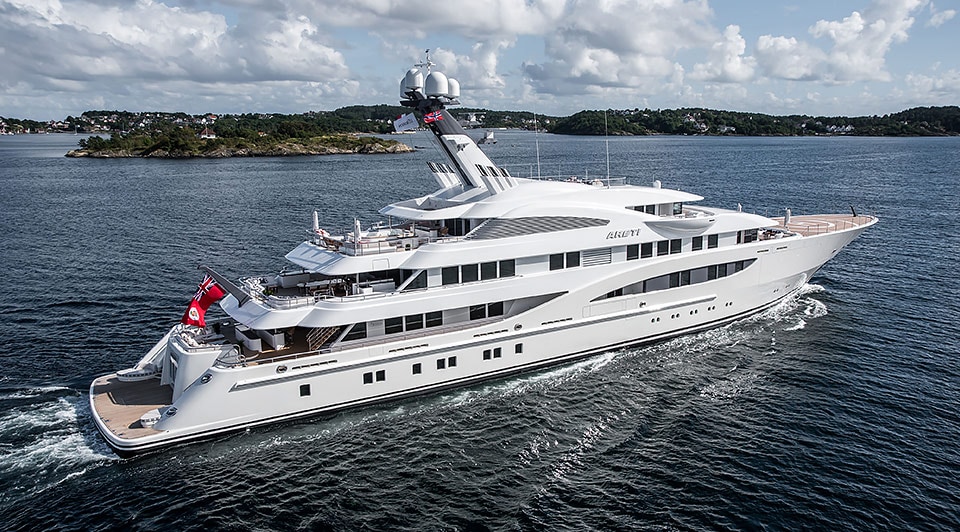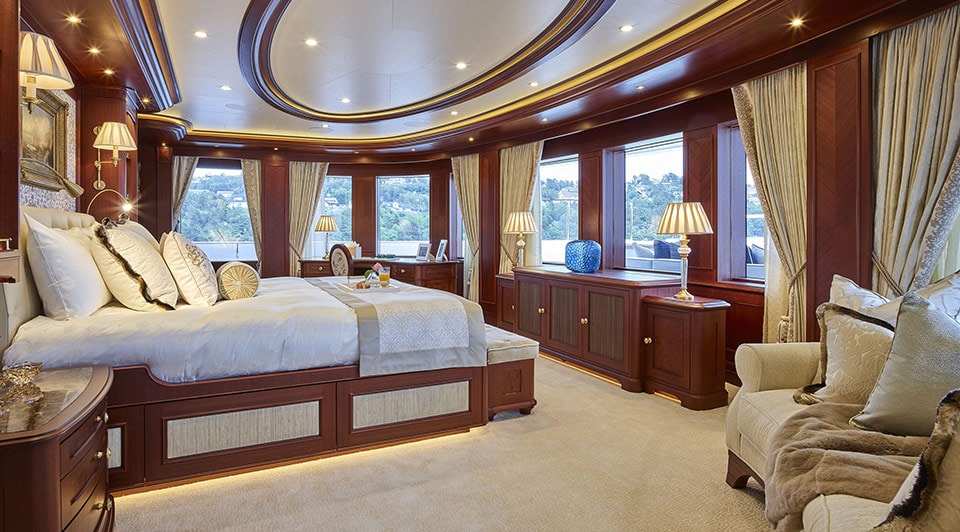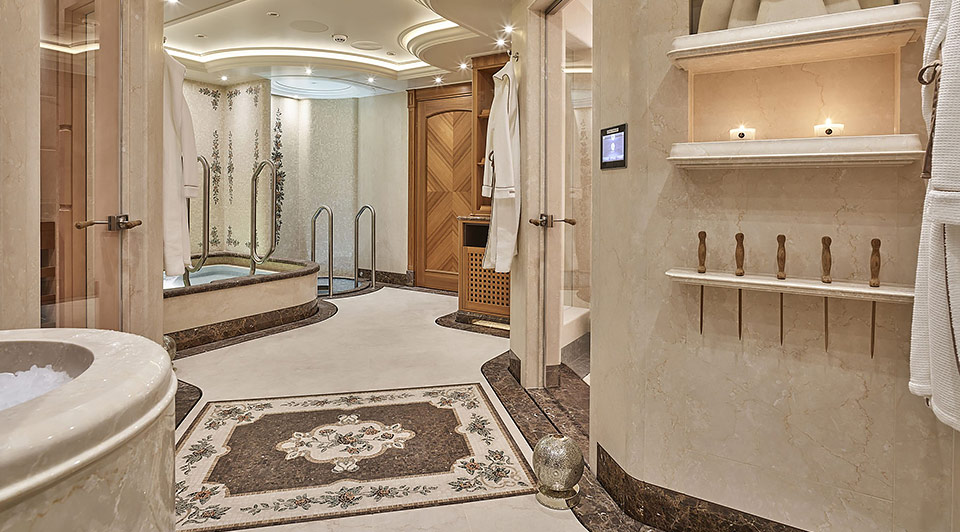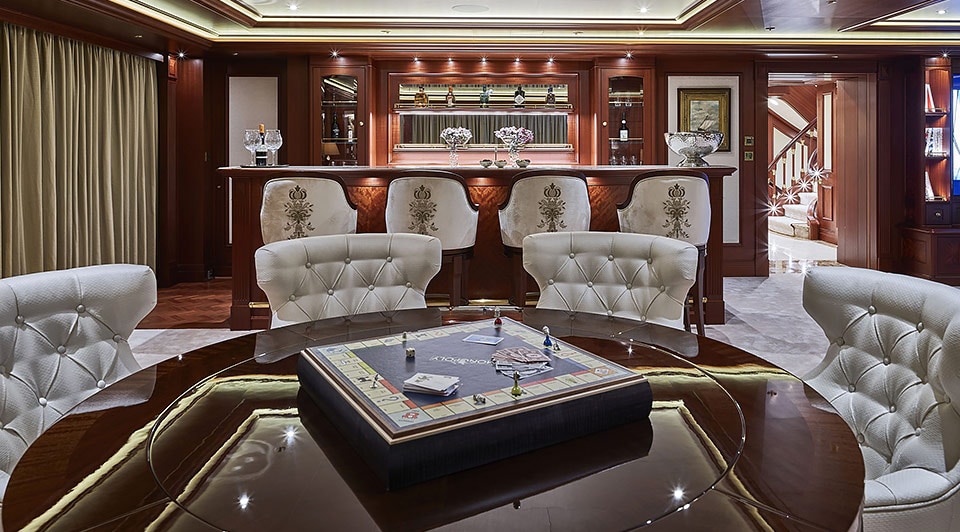Worldwide Sites
You have been detected as being from . Where applicable, you can see country-specific product information, offers, and pricing.
Keyboard ALT + g to toggle grid overlay
Winch Design makes yachting dreams a reality
For Winch Design, no two yachts are ever alike. Each one is a bespoke design and built from scratch with the client’s wishes and desires in mind. This is exemplified in the recent Areti project that was designed for personal use, entertaining friends and family, and even hosting the owner’s cycling team. In order to set sail, Winch Design—and most of the yacht design industry—relies on AutoCAD.
When it comes to yacht design, no detail is too big—or too small—because every inch of the boat is bespoke. Winch Design knows this from experience.
Founded 33 years ago by Andrew and Jane Winch with the design of a 36-foot sailboat for their very first project, the company has grown exponentially with more than 100 employees. The company has won nine World Superyacht Awards since 2009 and 17 Showboat Design Awards. It’s devoted not only to yachts and superyachts now, but also architecture and private aviation.

Matthew Wilkinson has been designing yachts utilizing AutoCAD for the past seven years at Winch Design. Yachts take on a variety of forms and purposes, from charter to personal use, he explains. All projects begin with consultations and development of ideas from the client’s point-of-view, such as determining the best placement of social spaces or the privacy of an owner’s suite and windows with ultimate views. The design process for the entire exterior and interior typically takes up to two years as the design comes to life.
For Winch Design the primary goal is to realize their clients’ dreams. And those dreams can be, quite literally, awe-inspiring. That was certainly true for the recent superyacht Areti project.
Designing Areti
From start to finish, Areti took approximately four years to complete. At 85 m in length with nine cabins for up to 18 guests, it was designed specifically for the owner’s lifestyle in mind.

“Areti is a real yachter’s yacht. The interior is traditional with an American classic twist,” Wilkinson says. “For Areti, the client really wanted to focus on a place where he could spend quality time with his family and friends.
“He is also the owner of a large cycling team, so one of his dreams was to have an on-board bike workshop,” he continues. “He wanted to be able to bring a team of cyclists on board, go anywhere in the world; go out for a day’s ride; come back and fix the bikes; and then relax in a top-end spa on board.”

Throughout the design process and by using AutoCAD, the Winch Design team truly catered to the client’s wants and needs. Since the client is a keen cyclist, the spa is state-of-the art for muscle regeneration, including a massage bed that sends high-pressure water in various pulses and a multi-sensory steam room with various scents that transports occupants to the rainforest or at sea. The dining room was meticulously created with his love for entertaining in mind. At the same time, the owner’s quarters include a deck that can’t be seen from anywhere else onboard, ensuring complete privacy for the client and their family.

“For Areti and all of our projects, we start with a sketch and then we develop it in AutoCAD,” Wilkinson says. “In the beginning of working on Areti, AutoCAD was especially helpful to quickly sketch ideas in 2D and planning the general arrangement.”
AutoCAD is used throughout the entire process, including using blocks to move furniture around; detailing the architraves, skirting, and wall paneling; and eventually refining everything to see down to the millimeter of the spaces and details for accuracy, he says.
“Everyone has their own style of writing or sketching, and AutoCAD allows the user to develop their own signature too. There are so many different ways to work with it that you just develop your own workflow, which feels so natural and intuitive. It does whatever you need, however you want it to.”
—Matthew Wilkinson, Associate, Winch Design
AutoCAD is the industry standard
Of course, building a yacht is a multi-faceted endeavor and AutoCAD is the mechanism to communicate between many stakeholders, whether it’s the shipyard or the interior outfitter.

“In AutoCAD, we produce room drawings that we call design intent drawings,” Wilkinson explains. “They're very different from construction drawings in that they outline the shape, proportions, and general style of the yacht. Each individual contractor does things differently, which is what is so amazing about this industry. Unlike architecture, there's no set way of doing things. Every boat is bespoke. Our job is to make sure the end result is what the client dreams of, so our design intent drawings must portray that.”
Everyone in the process—from the designers to the shipyard, contractors, and interior designers—uses AutoCAD. “It’s probably the only universal program in the industry,” Wilkinson says. For him, there’s also a clear reason as to why that’s the case.

“You can use AutoCAD the way you want, and there’s no set way of doing things,” Wilkinson says. “For us, it’s a design tool, but for contractors it’s a construction tool and for the shipyard it’s an engineering tool. We all have our own roles, but AutoCAD is adaptable to all of it.”
Discover the power of AutoCAD
Speed up and streamline your workflow with a subscription to AutoCAD including specialized toolsets.